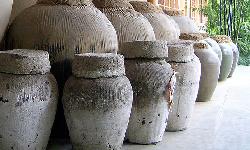Indian Bootleg Alcohol Kills 162
 In a shocking reminder of what can happen with illegal sales of any substance, 162 people have died in the Eastern Indian town of Diamond Harbor and the surrounding area. Alcoholic beverages are legal in India, but the bootleg products are sold at a third of the price, making illicit booze a popular alternative for the poor.
In a shocking reminder of what can happen with illegal sales of any substance, 162 people have died in the Eastern Indian town of Diamond Harbor and the surrounding area. Alcoholic beverages are legal in India, but the bootleg products are sold at a third of the price, making illicit booze a popular alternative for the poor.
The deaths are blamed on methanol contamination in the product and all occurred one or two days after drinking the stuff. Reports say that another 90 people were injured, but not fatally, by the tainted alcohol.
Estimates of alcohol addiction in India are about half that of the US (5% vs. 10%) but because of the high population, the actual number of alcoholics is about double. The most startling thing is that about 2/3 of the alcohol consumed in the country is illicit – wither smuggled to avoid taxes or manufactured in a black market network. The scale of the recent poisoning shows a huge customer base – assuming it was unintentional and only a single “batch” contaminated.
While we are less prone to such an event in the US, because alcohol prices are lower when compared with income, the same type of mass poisoning could happen with other illegal substances. The economics are evident in the Indian example. When it is cheaper to add methanol or cut corners, criminals are quick to do so. And enforcement only comes after the fact – after the deaths have drawn attention to the problem.
In this case, authorities did crack down. They arrested 12.
Methanol contamination kills after a latency period of from 8 to 24 hours where patients are symptom-free. That means there may be no direct link to a toxic product until many people have imbibed it. Once the latency period is over, blindness, coma and death follow, and even in those patients who survive, permanent blindness is a common outcome. The specific mechanism isn’t fully understood, but variations in nutritional status seem to account for differences in toxic dose level and final outcomes. That means that the poor, who preferentially buy the tainted booze would be at a higher risk.